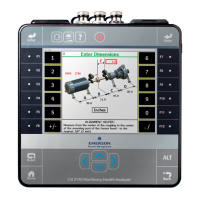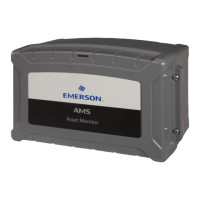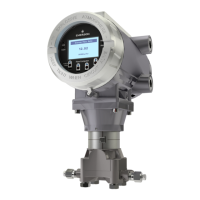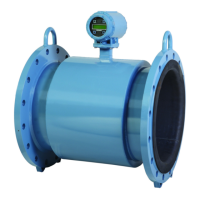Soft foot
Soft foot evaluation provides you with a sense of severity without showing numbers.
Numbers are not used because, most of the time, they are mistaken for the value of the
shims, which is incorrect. When the numbers are calculated, they are compared against
the tolerance (usually 0.5 mils/inch). See Table 7-1 for more information on soft foot
evaluation results.
The results are evaluated by taking the horizontal and vertical movement on each target
and calculating the total movement on each target. The largest movement of the two is
then divided by the distance between the laser and sensor (dimension C) to determine the
angle of deflection caused by loosening a hold-down bolt. This angle is compared to the
tolerance for final evaluation for that foot.
The advantage of this method is that it uses a combination of horizontal and vertical
movements on the target to determine the problem feet. Experience has shown that
approximately 20% of the soft foot conditions cause a horizontal move because of a
severely bent foot.
Frame Distortion Index (FDI)
Frame distortion index provides you with a sense of severity with numbers.
CAUTION!
Do not mistake frame distortion index numbers for shim values.
When the numbers are calculated, they are compared against the tolerance (usually
excellent <2 mils and acceptable <3 mils). If a particular foot is in the excellent range, the
number is plain. If the foot is acceptable, it has a clear box around the number. If the foot is
out-of-tolerance, it has a solid box around the number. The higher the number, the greater
the severity. See Table 7-1 for more information.
The number is evaluated by measuring the vertical angle and applying it to a millwright’s
“rule of thumb”:
FDI = 2 x Vertical Angle x Inboard to Outboard Foot Distance
Vertical angle is measured at the shafts when the hold-down bolts are loosened and the
inboard to outboard distance is the distance from the front to the back feet of the
component being measured (dimensions A or E in the Machine Dimensions screen). This
value is compared to the tolerance for final evaluation for that foot.
The disadvantage of this method is that it uses only vertical movement to determine the
problem feet (and the numbers are commonly mistaken for shim correction values).
7.5.5 Review alignment measurement results - horizontal
alignment
Reviewing alignment measurement results is available only in Advanced mode for
horizontal alignment jobs.
Advanced Laser Alignment
216 MHM-97432 Rev 7
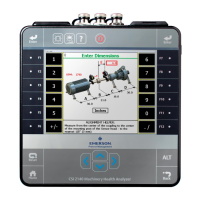
